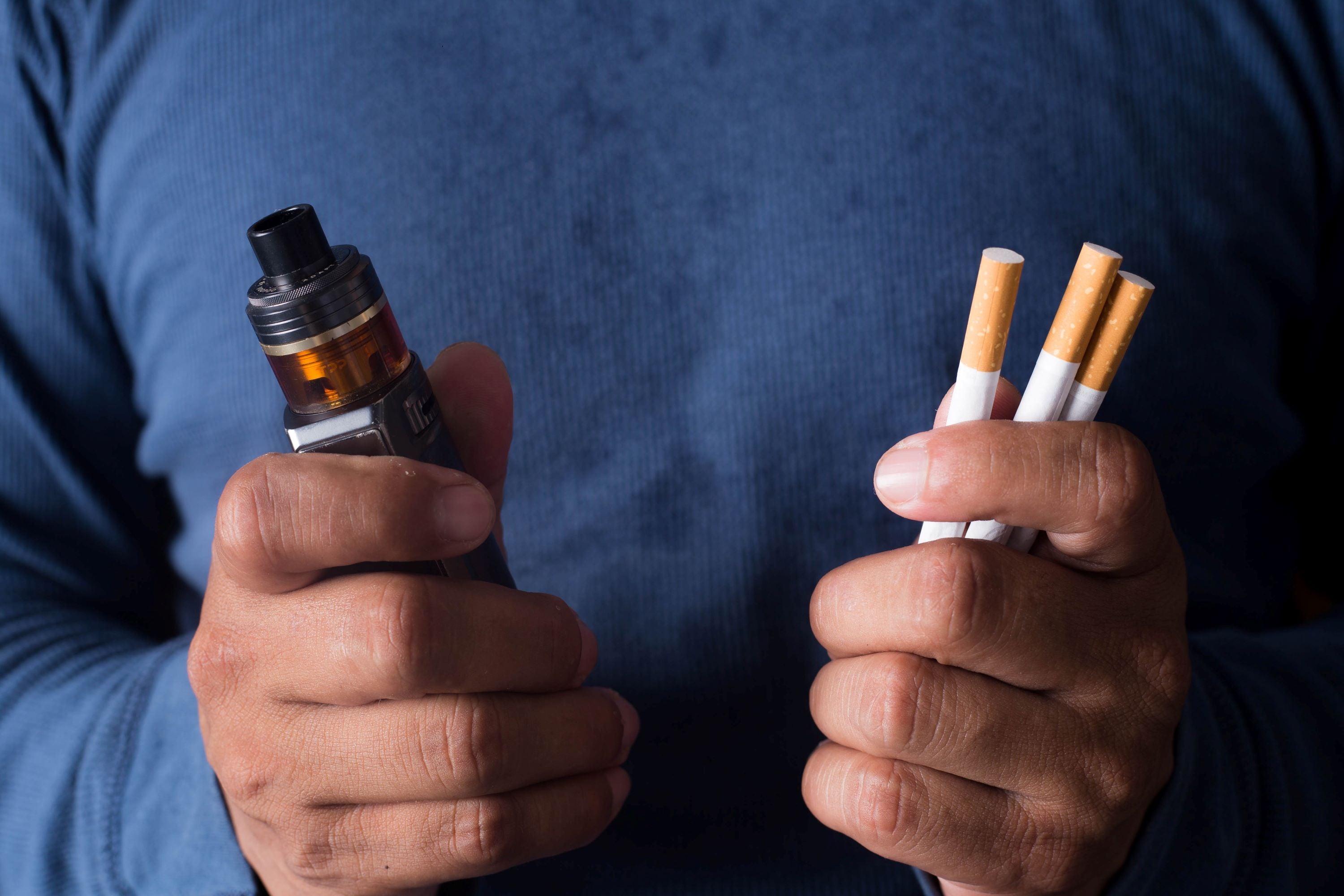Quitting smoking is a big challenge, especially when it comes to giving up cigarettes for good. Quitting smoking means regeneration for the body, and the benefits of not smoking far outweigh the disadvantages.
In this article, we want to show you the advantages of quitting smoking and give you tips on how to prevent weight gain after quitting smoking.
Stop smoking effects
Quitting smoking has many positive effects on the body, as the body can be properly oxygenated again after the last cigarette and gradually eliminate toxins. Many smokers feel fitter and more energetic shortly after quitting smoking.
Benefits include a lower risk of developing cancer, cardiovascular diseases, high blood pressure, strokes, or bronchitis. After three months without cigarettes, lung function improves by about 30 percent, and skin aging is also slowed down.
After just eight hours without a cigarette, oxygen transport in the blood improves, and the organs can be better supplied. After two days, taste and smell return to normal. After a year without smoking, lung and cardiovascular system activity returns to normal levels. After five years, the risk of heart attack decreases significantly, and after ten years, the risk of developing lung cancer is similar to that of a non-smoker.
Quit smoking phases
To successfully quit smoking, you must first go through these 7 phases. The first phase is the steady smoking phase, where you still smoke regularly and refers to the phase just before deciding to quit smoking. In the contemplation phase, you slowly realize that smoking not only has a negative impact on health but also on mental health, appearance, and finances.
In the third phase, you finally decide to quit smoking permanently. Do not be discouraged by potential weight gain or withdrawal symptoms, as these are only temporary and can be quickly overcome with sufficient motivation.
To ensure that you actually follow through with quitting smoking, you should set a specific date for your last cigarette. The remaining cigarettes should be kept out of reach or, even better, completely disposed of. The first three days after quitting smoking are the most difficult because there is still residual nicotine in the body. This can also lead to changes in your mood and you may feel easily irritated.
The final phase is referred to as the stabilization phase. In this phase, you will notice the most positive physical changes, and above all, remember: do not relapse!
Stop smoking skin
Smoking greatly affects our skin and contributes to premature aging. Quitting smoking leads to our skin regaining its rosy complexion, as circulation is improved and the skin is better nourished.
In addition, we actually look younger after quitting smoking, as the chemicals in cigarettes attack the collagen network of the skin and cause it to sag. Many smokers report developing so-called smoker's lines on their face over time. Quitting smoking ensures that the skin ages at a normal pace again.
Furthermore, many smokers complain of dry patches on the skin. Smoking can even lead to flaky areas on the skin that can only be eliminated by quitting smoking. Without cigarettes, the vitamin C content in the skin can also stabilize. This is important for firm and youthful skin.
Lastly, quitting smoking can reduce skin diseases. 41 percent of smokers have acne , while only 25 percent of non-smokers do. In addition, smoking can trigger a range of inflammatory reactions and promote the development of skin cancer.
Stop smoking Weight gain
Smoking itself does not lead to weight loss. However, smokers have a higher energy expenditure than non-smokers and can therefore metabolize fats and carbohydrates more quickly. In addition, nicotine suppresses appetite. Weight gain is a common side effect of quitting smoking, especially for people who were already inactive and had a poor diet before.
Stop smoking tips: Avoid weight gain
After quitting smoking, you may experience cravings that need to be satisfied. However, calorie-rich foods should be replaced with vitamin-rich, high-fiber, and low-fat foods, as these stabilize blood sugar levels.
Divide your meals into several small meals so that your stomach is constantly active. Physical activities naturally help to maintain weight and improve health.
Snus as an Alternative to Smoking
With snus, there is no combustion process, and the risks of passive smoking are completely eliminated. For smoking cessation, you can use snus with different nicotine levels and gradually reduce the amount. Products with a nicotine content above 20 mg/g include the edel COLD AW with 25 mg/g. Skruf Super White Fresh Mint No.52 AW contains only 8 mg/g in comparison.


